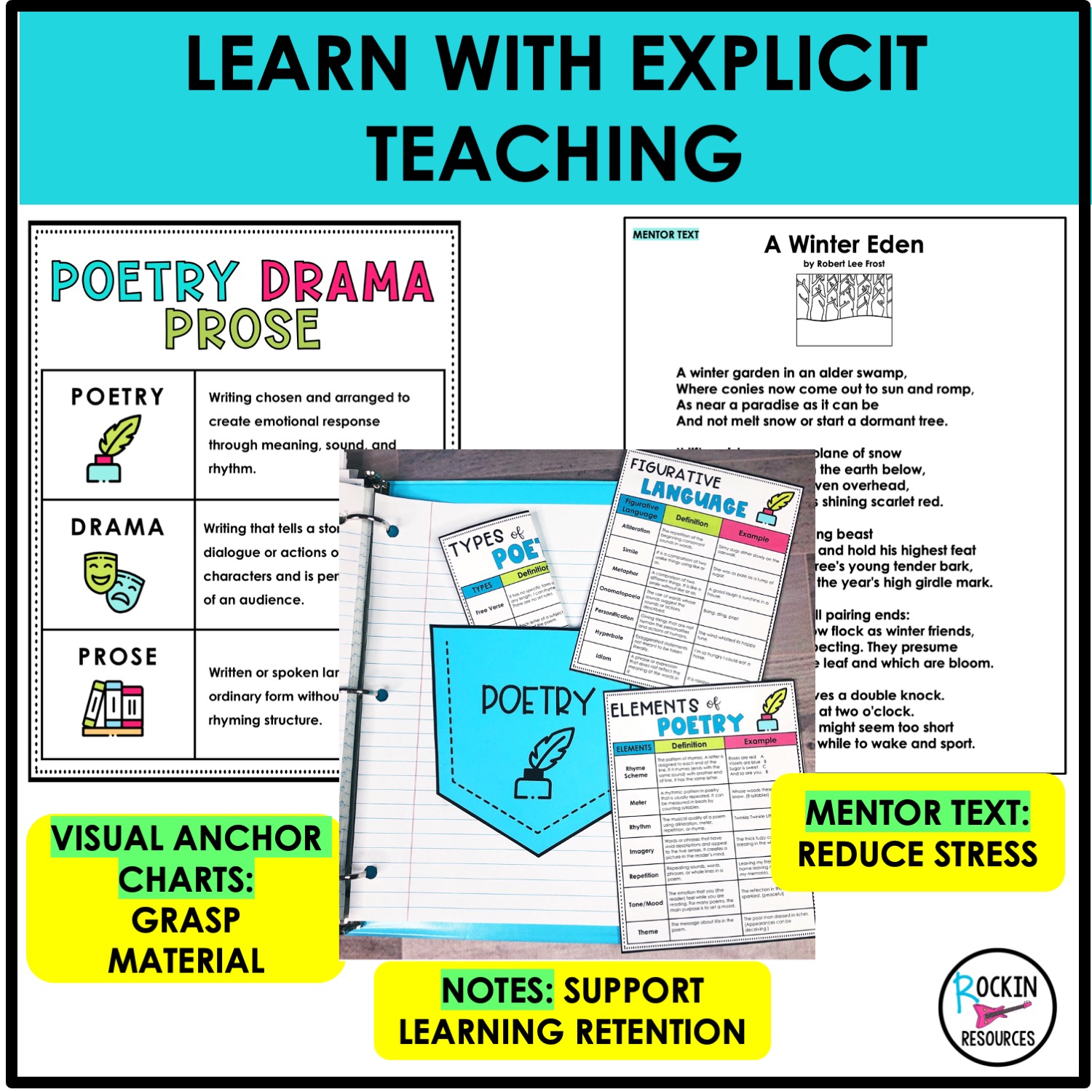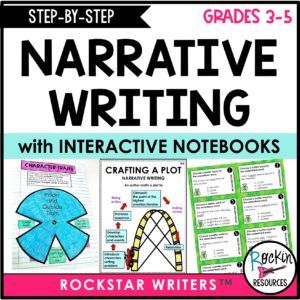Through a scaffolded, structured approach, students learn how to identify, analyze, compare, and contrast the unique features of each genre, building the deep comprehension skills they need for success on reading assessments and beyond.
Ideal for 4th and 5th grade, this resource helps students move beyond surface-level understanding and truly grasp how structure, style, and purpose differ between poetry, drama, and prose, which is essential for improving overall reading comprehension and literary analysis skills.
It comes in PDF, POWERPOINT, AND GOOGLE.
✅ What’s Included?
1. SCRIPTED LESSON PLANS: Step-by-step guidance for teaching the differences between drama, poetry, and prose, including pacing and teacher prompts.
2. ANCHOR CHARTS: Visuals for Poetry, Drama, Prose, as well as Elements and Types with meanings and examples for each.
3. MENTOR TEXTS: Original mentor texts for modeling, plus a list of suggested published texts for additional practice.
4. QUESTIONS: A separate list of general questions for poetry, drama, and prose to use when asking questions about a text.
5. DIFFERENTIATED PASSAGES so that every student can learn at their level.
-
2 engaging paired passages (each in three reading levels- below, average, challenging)
-
Comprehension questions focused on comparing and contrasting the genres.
6. DIFFERENTIATED INTERACTIVE NOTES to build lasting comprehension strategies.
-
Pre-written notes
-
Sentence frames (fill-in-the-blank)
-
Write in your own notes
-
No cut-and-paste option (saves time)
-
Mini-anchor charts (ideal for absent students)
-
Digital notes
7. WORKSHEET-STYLE PRACTICE FOR EACH TYPE OF GENRE:
-
KWL Charts
-
Identifying
-
Analyzing
-
Writing
-
Reading Response
8. CUMULATIVE ACTIVITIES FOR COMPARE AND CONTRAST
-
24 task cards to review and reinforce learning.
-
Worksheets
-
Passages (see above)
-
Prompts
-
Graphic Organizers (reusable for any book or text)
9. STUDENT TRACKING FORM: Monitor progress and growth over time.
10. ASSESSMENT: Differentiated paired passages with comprehension and compare/contrast questions for evaluation.
11. OPTIONAL EXTENSION ACTIVITIES: Ideal for differentiation, early finishers, and project-based learning.
★★★★★★ ANSWER KEYS ARE INCLUDED
Teachers love this unit because it provides everything needed for explicit instruction, guided practice, and independent application—no prep required! The lessons are print-and-go, making it simple to differentiate and adapt for small groups, whole-class instruction, or literacy centers.
DIGITAL VERSION: All Google Links and answer keys are in the Teacher Printable PDF.
Thank you for visiting my store!
Pam
GO TO ROCKINRESOURCES.COM TO LEARN MORE ABOUT THE STEP-BY-STEP PROCESS AND HOW I TEACH TO MOTIVATE, EDUCATE, DIFFERENTIATE. DON’T FORGET TO JOIN FOR THE EXCLUSIVE FREEBIE VAULT!
GRAB TEACHING TIPS FROM:







